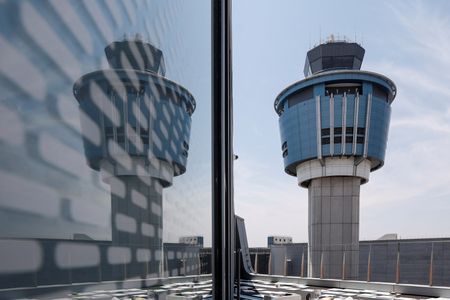By David Shepardson
WASHINGTON (Reuters) -Major U.S. aviation groups and unions urged Congress to address persistent shortfalls in funding for Federal Aviation Administration facilities after a series of reports raised alarm about aging air traffic control facilities.
“Necessary maintenance of existing systems is being neglected,” said the letter signed by Airlines for America, Aerospace Industries Association, the U.S. Chamber of Commerce, Air Line Pilots Association and others warning a failure to address funding needs “will mean reduced airspace operational efficiency — negatively affecting the traveling public and other civil and military users of the system.”
The FAA did not immediately comment.
In March, President Joe Biden proposed spending $8 billion over the next five years – beginning with $1 billion in 2025 – to replace or modernize more than 20 aging air traffic control facilities and 377 critical radar systems.
The letter noted that a quarter of all FAA facilities are 50 years or older adding the effects of underinvestment “are becoming strikingly clear.” The letter cited the failure of a pilot alerting database in January 2023 that resulted in a halt to all departing passenger airline flights in the United States for the first time since Sept. 11, 2001.
An independent report in November cited FAA air traffic control facilities with leaking roofs, broken heating and air conditioning systems, and old surveillance radar systems that must soon be replaced at a cost of billions of dollars. It called for “urgent action” to bolster the FAA after a series of close calls involving passenger jets.
The report said the FAA’s communications system has been outdated for years and the agency can no longer get spare parts for many systems.
Separately, the FAA wants funding from Congress to hire another 2,000 air traffic controllers. A persistent shortage of controllers has delayed flights and, at many facilities, controllers are working mandatory overtime and six-day weeks to cover staffing shortages.
Last month, the FAA again extended cuts to minimum flight requirements at congested New York City-area airports through October 2025, citing staffing shortages.
(Reporting by David ShepardsonEditing by Chris Reese and Nick Zieminski)





